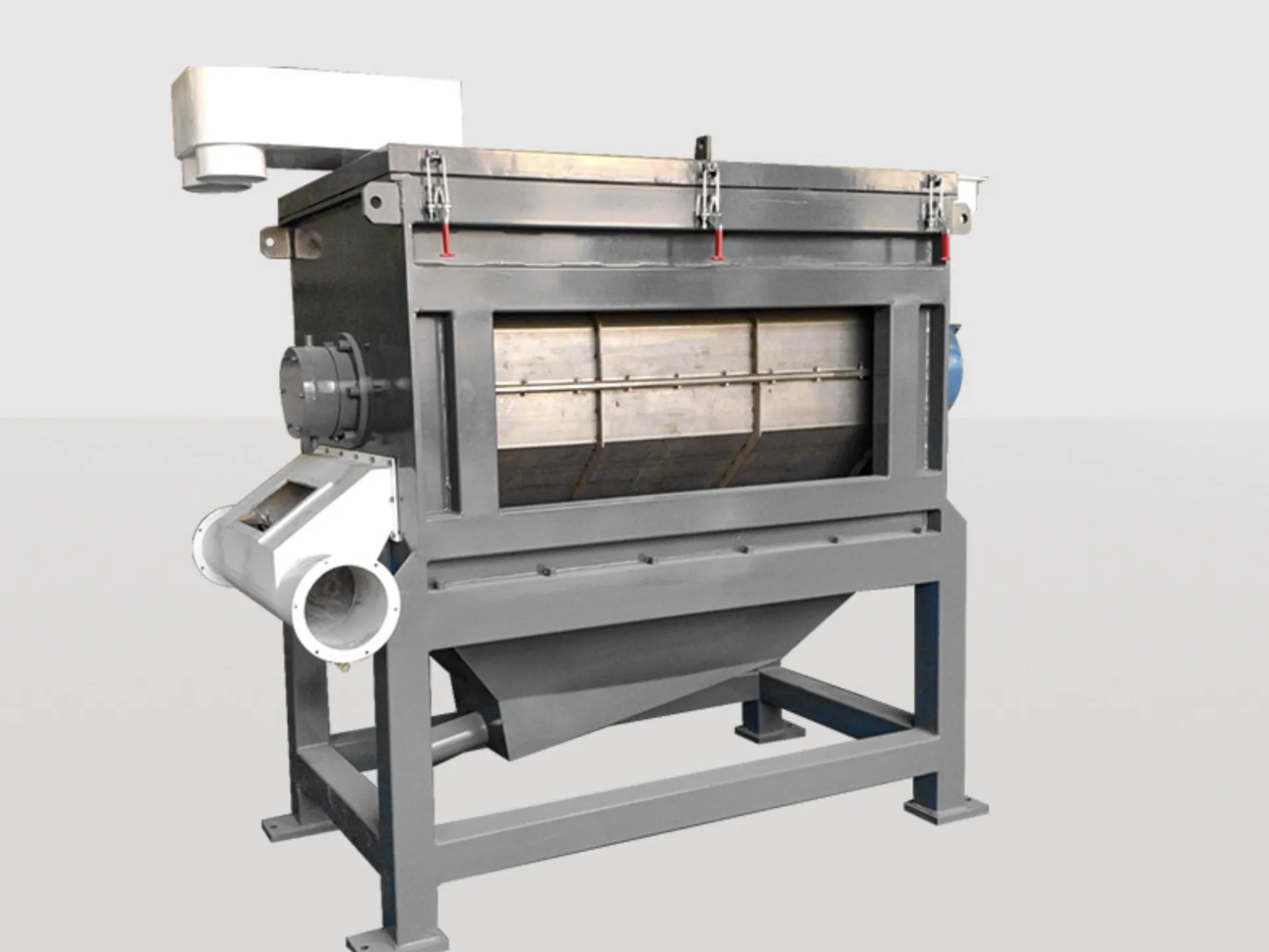In any recycling facility, success is measured by efficiency, uptime, and the quality of the final product. The centrifugal dryer for recycling applications is a cornerstone technology that directly impacts all three of these metrics. While its basic function—removing moisture—is well understood, unlocking its full potential requires a deeper knowledge of its features, operation, and maintenance.
This guide is for the plant managers, maintenance engineers, and technical operators who are responsible for the day-to-day performance of a recycling line. We will move beyond the basics to explore the advanced features that boost performance, the operational best practices that maximize throughput, and the proactive maintenance schedules that prevent costly downtime.
Here is how you can turn your centrifugal dryer from a simple piece of equipment into a profit-driving asset.
The Critical Role of the Centrifugal Dryer in Modern Recycling
To recap, a centrifugal dryer uses high-speed mechanical force to separate water from washed plastic materials like PET flakes, PE film, and PP regrind. By efficiently dewatering the material before it reaches the extruder, it accomplishes two critical goals:
- Protects Material Quality: It prevents the hydrolytic degradation and defects that occur when overly wet plastic is exposed to high heat.
- Reduces Energy Costs: It dramatically lowers the energy needed for final drying, cutting operational expenses compared to purely thermal-based systems.
A well-functioning dryer is the link that ensures the quality from your wash line is carried through to your final, sellable product.
Beyond the Basics: Advanced Features that Drive Performance
Modern industrial dryers are engineered with features designed to improve efficiency, simplify operation, and enhance the purity of the final product. Understanding these features is key to selecting the right machine and using it effectively.
Feature 1: Visual Monitoring Windows for Real-Time Adjustments
What it is: A reinforced, transparent window on the machine’s housing.
Por que isso importa: This simple feature is incredibly valuable. It allows operators to visually inspect the material flow and drying action without shutting down the line. They can quickly spot potential issues like material clumping or uneven distribution, allowing for immediate adjustments to the feed rate. This reduces minor issues before they become major blockages, maximizing uptime.
Feature 2: Advanced Filtration for Superior Product Purity
What it is: Integrated systems like dirt-lifting screws and specialized screen configurations.
Por que isso importa: The centrifugal process can also serve as a final cleaning step. As water is flung out, so are fine contaminants and residues that may have clung to the plastic. Advanced filtration systems are designed to actively separate these fines from the dewatered plastic stream. This results in a cleaner final product, which can command a higher price and meet the stricter quality standards of demanding buyers.
Feature 3: Optional Heating Elements for Ultra-Low Moisture Targets
What it is: A built-in heating component, often using hot air, that works in conjunction with the mechanical drying.
Por que isso importa: While the primary benefit of a centrifugal dryer is its energy-efficient mechanical action, some applications require extremely low final moisture levels (e.g., below 0.5%). For these cases, a hybrid model with an optional heating element offers the best of both worlds. The centrifugal force removes the bulk of the water, and a small, efficient heating unit removes the final residual moisture. This is far more economical than relying on a massive standalone thermal dryer.
Operational Best Practices: Getting the Most from Your Machine Daily
The best features are only effective when supported by sound operational practices. How your team runs the machine every day has a direct impact on its performance and lifespan.
Maintain a Consistent Feed Rate
A centrifugal dryer works best when it receives a steady, consistent flow of material. Overloading the machine can lead to inefficient drying, motor strain, and blockages. Underfeeding it wastes energy and reduces throughput. Use a screw conveyor or rotary valve to meter material into the dryer at a constant, controlled rate that matches the machine’s specified capacity.
Ensure Proper Upstream Sorting
The dryer is not a grinder or a sorting machine. Large, foreign objects (like metal or rocks) that accidentally enter the dryer can severely damage the rotor and screen, leading to expensive repairs and downtime. Ensure your upstream sorting and washing processes are effective at removing these contaminants before they reach the dewatering stage.
Integrate with Downstream Equipment
The output of your dryer directly impacts the performance of your extruder. Ensure the discharge chute feeds smoothly into the extruder’s hopper. Any bottlenecks here can cause material to back up into the dryer. Proper integration ensures a seamless flow from washing to dewatering to final extrusion.
A Proactive Maintenance Schedule to Prevent Downtime
Reactive maintenance—fixing things when they break—is a recipe for lost production. A proactive maintenance schedule is essential for reliability. Work with your manufacturer, like Energia, to establish a plan, and always follow proper safety protocols, such as lock-out/tag-out procedures compliant with OSHA standards.
Daily Checks (Before and After Shift)
- Visual Inspection: Look for any loose bolts, guards, or signs of wear.
- Listen: Note any unusual noises like rattling or grinding, which could indicate a bearing issue or foreign object.
- Check Outlets: Ensure the water drain is clear and the material discharge is unobstructed.
Inspeções semanais
- Clean the Screen: Remove the screen and clean it thoroughly. Blocked perforations are the number one cause of poor drying performance. Inspect it for any rips or damage.
- Check Rotor Paddles: Inspect the rotor blades or paddles for signs of wear or damage. Worn paddles are less effective at moving material.
- Lubricate Bearings: Follow the manufacturer’s recommendations for lubricating all moving parts, especially the main rotor bearings. Proper lubrication is critical for extending the machine’s life.
Quarterly and Annual Maintenance
- Inspect Damping Elements: Check the machine’s vibration dampers for wear and tear. Worn dampers can lead to excessive vibration.
- Motor Inspection: Check the motor’s connections, cooling fan, and performance.
- Full System Review: Conduct a comprehensive inspection of all components, including the frame, housing, and all safety guards.
Troubleshooting Common Issues: Vibration and Inefficient Drying
Problem 1: Excessive Vibration
- Cause: This is often due to an unbalanced rotor (caused by uneven wear or material buildup) or worn-out damping elements. Incorrect installation can also be a factor.
- Solução: Immediately shut down the machine. Clean the rotor thoroughly. If the problem persists, inspect the dampers and bearings for wear and consult your manufacturer’s technical support.
Problema 2: Secagem Ineficiente (Alta Umidade no Resultado)
- CauseA causa mais comum é uma tela obstruída ou bloqueada. Também pode resultar do sobrecarregamento da máquina com uma taxa de alimentação muito alta.
- SoluçãoParar a alimentação e limpar a tela. Se a tela estiver limpa, reduza a taxa de alimentação do material para dentro da capacidade especificada da máquina.
Parceria para Performance e Lucratividade Máxima
UM secador centrífugo para aplicações de reciclagem é uma ferramenta poderosa, mas requer expertise operacional para entregar o máximo de valor. Ao entender suas características avançadas, implementar as melhores práticas diárias e seguir um rigoroso cronograma de manutenção, você pode garantir que sua máquina funcione de maneira eficiente por anos.
Na Energycle, oferecemos mais do que apenas equipamento. Oferecemos a parceria e o suporte técnico necessário para otimizar sua linha de reciclagem completa. Nosso time pode ajudar você a escolher o máquina de desidratação de secador centrífugo para secagem de plástico e desenvolver os processos para maximizar seu retorno sobre o investimento.
Para saber mais sobre como melhorar o desempenho da sua instalação, contate a equipe da Energycle.



